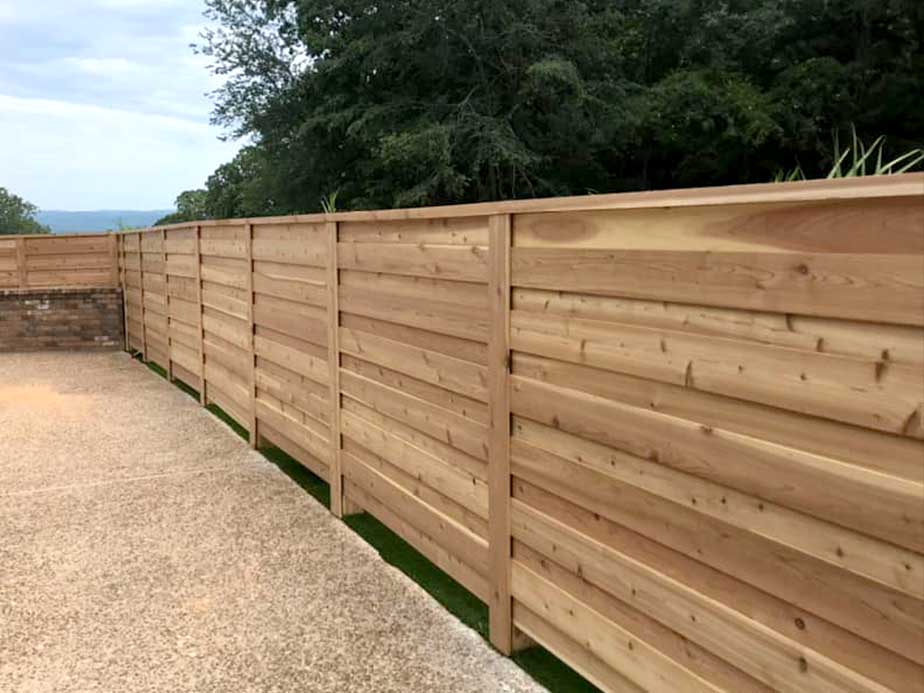Featured

When considering installing a fencing on your building, one of the most crucial actions is to understand whether you need a license. The specific authorizations needed can vary depending on your place, the type of fencing you prepare to mount, and the elevation or positioning of the fence.
Why You Need a License for a Fencing Installment. A fence authorization is needed to make certain that the installment meets local laws. The authorization process helps local authorities verify that your fence does not conflict with traffic visibility, respect your residential property lines, or go against elevation limitations. It likewise makes sure the safety and security of the structure, so it does not posture a threat to you, your neighbors, or the general public. Installing a fence without a license can cause fines, elimination of the fence, or delays in building and construction, so it's vital to inspect whether a permit is needed prior to beginning your task.
Kinds Of Licenses You May Need. There are a couple of common types of licenses you could need for a fence installment:
Structure Authorization. A structure license is the most common authorization needed for fencing installments. This authorization makes certain that the fence satisfies security criteria and is built according to regional building ordinance. A building permit is commonly needed if the fencing goes beyond a specific height (typically 6 feet), is made from specific materials, or is situated near a public sidewalk or roadway.
Zoning License. A zoning license might be required to validate that your fence abides by local zoning legislations. Zoning laws can dictate where a fence can be positioned on your residential or commercial property, just how high it can be, and whether it is admitted specific areas (such as along property lines or ahead backyards) Some towns have laws restricting the elevation of fencings in the front backyard to make certain visibility for pedestrians and motorists.

Trouble License. You may need a trouble authorization if you are constructing a fence near your building line or close to a road. An obstacle describes the distance a framework, including fencings, should be from the residential or commercial property line. Trouble policies differ by location, and making sure that your fence is positioned properly can protect against disputes with next-door neighbors and avoid violations.
House Owner Organization (HOA) Authorization. You might need approval from them in addition to neighborhood permits if you live in an area controlled by a Homeowner's Organization (HOA) HOA policies frequently cover the kind of products, elevation, style, and color of fences. Even if your city government does not need a permit, your HOA may still have certain standards that need to be complied with.
Just How to Use for a Fence Authorization. To obtain a fencing license, you'll need to call your regional structure division or planning office. The application procedure normally includes loading out a form, paying a charge, and submitting a site plan of your residential or commercial property that shows the suggested area of the fence. You may also need to include information regarding the products, elevation, and design of the fence.
In some instances, a local authorities might require to check your residential or commercial property before accepting the permit. As soon as the license is provided, you will certainly be accredited to proceed with your fencing installment.
When Is an Authorization Not Required? In particular circumstances, a license may not be needed. These circumstances can include:
Reduced Elevation Fences: In lots of locations, fencings that are listed below a certain elevation (frequently 3 to 4 feet) might not need a license, particularly if they are positioned in the backyard or other non-visible locations.
Fence Replacement: If you're changing an existing fencing with the same elevation and product, some areas might not require a new permit.
Non-Obtrusive Fences: Short-lived or decorative fences, such as those utilized for horticulture or landscaping functions, may not need permits as long as they are not permanent and reduced.
Nevertheless, it's vital to examine with your local zoning workplace or building division, as laws can vary by territory.
Repercussions of Not Getting a Permit. Stopping working to obtain the required licenses can bring about significant consequences. These consist of fines, forced elimination of the fencing, and even delays in building. Furthermore, if your fencing doesn't satisfy local laws, you can deal with lawful concerns with next-door neighbors or neighborhood authorities.

Final thought. When mounting a fence, it's vital to research the authorization requirements in your area. By ensuring that you adhere to regional laws and obtain the needed authorizations, you can guarantee and avoid pricey errors that your fencing is legally certified. Consult your neighborhood building division, HOA, and zoning office to establish what licenses are required for your particular fencing task. This action is essential to secure both your financial investment and your residential property's value.
Latest Posts
Smooth Light Weight Aluminum Gutters: The Smart Option for Your Home
Published May 23, 25
1 min read
Safeguard and Improve Your Home with Weathercraft's Exterior siding Solutions
Published May 23, 25
1 min read
Check Out Best Vehicle Maintenance Solutions from Montclare Auto Repair – Reliable Repairs Await
Published May 23, 25
1 min read
More
Latest Posts
Smooth Light Weight Aluminum Gutters: The Smart Option for Your Home
Published May 23, 25
1 min read
Safeguard and Improve Your Home with Weathercraft's Exterior siding Solutions
Published May 23, 25
1 min read
Check Out Best Vehicle Maintenance Solutions from Montclare Auto Repair – Reliable Repairs Await
Published May 23, 25
1 min read